Cosmetic Surgery
Cosmetic Plastic Surgery in Lucknow - Transform Your Appearance
- Home
- Services
- Cosmetic Surgery
Types of Cosmetic Surgery
Cosmetic plastic surgery includes both surgical and non-surgical techniques that enhance and remodel bodily structures to improve appearance and confidence. From breast augmentations and facelifts to injectables and laser treatments, our team of skilled cosmetic & plastic surgeons in Lucknow offers a wide range of options for cosmetic & plastic surgery in Lucknow to help boost a person’s confidence, self-esteem, and sense of beauty.
1. BODY SURGERY
Cosmetic plastic surgery in Lucknow offers a variety of techniques to help you achieve the body contours you desire. Liposuction is a popular minimally invasive surgical procedure that removes excess fat and contours the body, also known as lipoplasty, liposculpture suction, lipectomy, or lipo. This procedure is typically used to remove fat from the abdomen, hips, thighs, butt, arms, neck, or ankles. A plastic or dermatological surgeon in Lucknow will insert a thin tube called a cannula through tiny incisions and use it to suction out the fat. There are several different techniques used in liposuction, including Suction Assisted Liposuction (SAL), Ultrasound Assisted Liposuction (UAL), Power Assisted Liposuction (PAL), and Laser-Assisted Liposuction (LAL). Your Cosmetic & Plastic Surgeon in Lucknow can help you determine which technique is right for you.

Procedure
The procedure takes one to four hours, and most patients have dramatic results after only one session. This is why so many doctors and patients prefer it to nonsurgical fat reduction treatments like SculpSure, CoolSculpting, or Vanquish, which usually require at least two sessions and take months to see results.

Recovery
Expect some pain, swelling and bruising after the procedure. Your surgeon may prescribe medication to help control the pain and antibiotics to reduce the risk of infection
After the procedure, the surgeon may leave your incisions open and place temporary drains to promote fluid drainage. You usually need to wear tight compression garments, which help reduce swelling, for a few weeks. You may need to wait a few days before returning to work and a few weeks before resuming your normal activities — including exercise.
During this time, expect some contour irregularities as the remaining fat settles into position.

Procedure
Depending on its complexity, a tummy tuck procedure can take between 90 minutes and five hours. It’s usually performed under general anesthesia (fully asleep). During the procedure, a horizontal incision is placed just within or above the pubic area. If there’s loose skin above the belly button, the surgeon may make a second incision around it. Excess skin is trimmed, and the remaining skin is sutured together. A new opening for the belly button is created in the midline and anchored to the abdominal wall. Finally, excess fat is removed from the skin around the new opening, giving it an attractive “innie” look.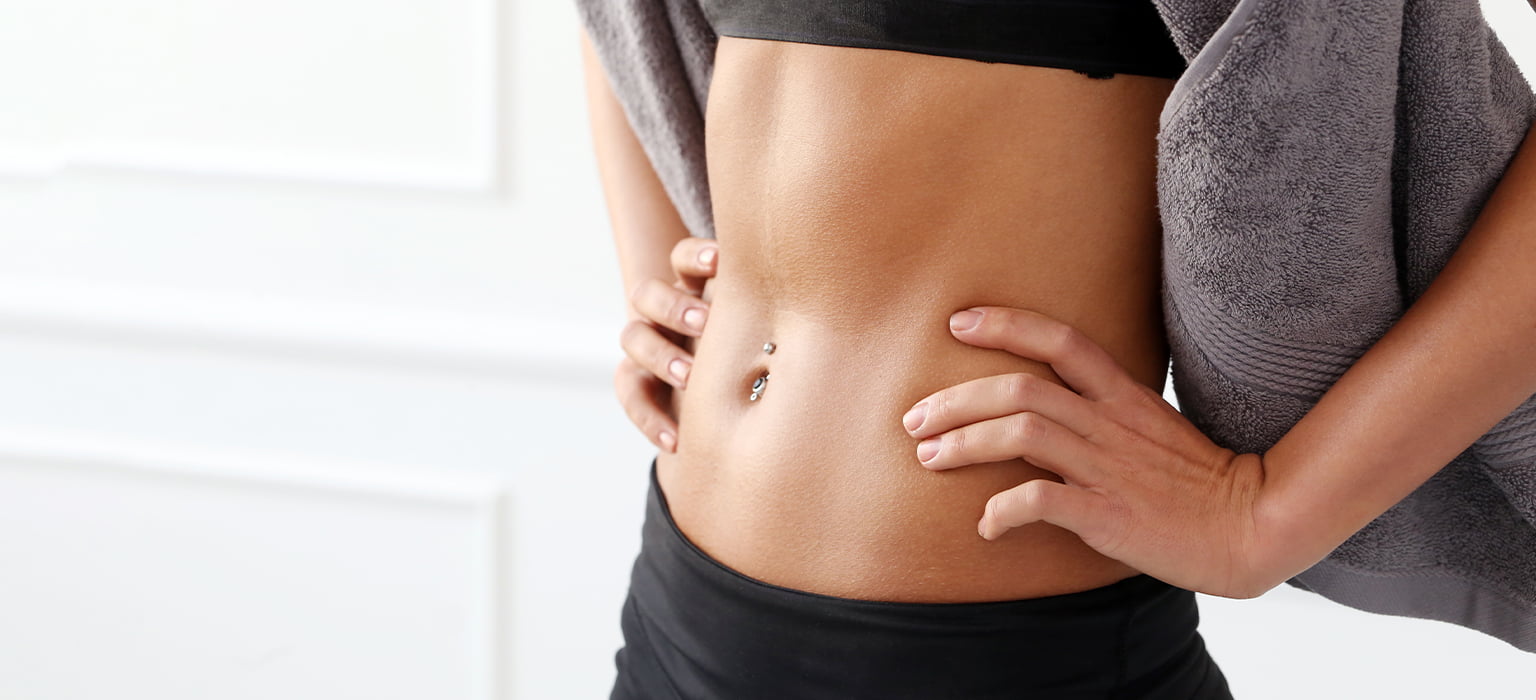
Recovery
Patients can be discharged in the evening after the surgery. However bedrest is advised for 3-4 days. Patients are mobilised by the plastic surgeon on 2nd or 3rd day. After surgery, you will put in a pressure garment for about 6 weeks. There will be fluffy dressing over the suture line. You will feel sore for a few days but will be essentially mobile. The drains will be removed once the drainage volume is low. You will be discharged from the hospital in a couple of days. You will be able to walk and go about your routine activities with due care.
Procedure
There square measure a range of various techniques employed by Plastic Surgeons for a body elevate. The precise technique which will be used upon you may be mentioned together with your operating surgeon. Incision length and pattern depend upon the quantity and placement of excess skin to be removed, additionally as personal preference and surgical judgment. Body elevate may be combined with different Cosmetic & cosmetic surgery procedures like Liposuction, Tummy Tuck, Breast Reduction, Breast Augmentation, and Breast elevate. These procedures not solely take away excess skin and fat. They additionally improve the unpleasant stretch marks and build Associate in Nursing elated, shapely, young and fuller look. A Body elevate may be.- Central Body Lift
- Lower Body Lift
- Brachioplasty (Arm-lift)

Recovery
Since body lifts combine multiple surgical procedures, it’s hard to predict how much downtime you’ll need. But you’ll want to plan for about a month off work, and you should expect to take it easy for another few months Your initial recovery immediately after your procedure could take a few hours or up to two days, depending on the extent of your procedure and how long you need to be monitored by medical staff. When you’re ready, your doctor will send you home with compression garments, to keep your skin from moving or swelling too much while you heal. You may also have surgical drains, to prevent fluids from building up. This helps decrease swelling and the potential for infection. You may be woozy (especially if you’re on prescription pain medication), so plan to have someone take you home. You’ll also need someone to help you out for the first few days after your procedure.

Procedure
Your procedure may be performed in a hospital, an independent surgical facility, or an office-based surgical suite (which should be appropriately accredited). If it’s not done in a hospital, make sure your board-certified plastic surgeon has hospital privileges, so you can get emergency care quickly in the rare event that something goes wrong. Once you’re prepared for surgery, your doctor and medical team will follow the surgical plan you agreed on. You’ll be under general anesthesia (completely asleep and intubated) until it’s all over. During a breast lift with augmentation, your surgeon lifts and reshapes breast tissue, removing extra skin and often repositioning the nipple so it sits higher on the breast. Breast augmentation is usually done by inserting silicone implants over the breast muscle. But if you’re looking for a relatively small increase in breast volume and don’t need a lift, your surgeon could do a fat transfer, taking fat from other areas of the body (such as the belly or thighs) via liposuction and injecting it into your breasts. To perform a tummy tuck, your surgeon makes a low, hip-to-hip incision, pulls back the skin and underlying abdominal tissue, repairs and tightens your ab muscles, and removes excess skin and tissue. They may also repair a hernia or diastasis recti before closing the incision. For liposuction, the surgeon inserts a thin, hollow tube called a cannula through small incisions to suction out excess fat. Some types of energy-assisted liposuction also tighten skin, which helps prevent laxity and sagging once the fat is removed. A surgeon who specializes in vaginal rejuvenation can tighten the entrance to the vagina with a perineoplasty and the vaginal canal and floor with a vaginoplasty.
Recovery
Recovery time after a mommy makeover depends on what you had done, but it’s safe to assume that you’ll need at least two weeks off work—up to six weeks, if your job is highly physical or involves heavy lifting. You’ll be able to engage in light daily activity during the initial two-week recovery period, with no exercise at all for three weeks and no intense exercise for six weeks. You’ll also need to avoid any heavy lifting. Swelling and bruising will start to subside in one to three weeks, and you’ll see your final results within six months, when you’re done healing. Scars will continue to fade for 6-12 months after surgery.Facts About Surgeons
The Daddy Makeover combines several plastic surgery procedures to help men achieve a rejuvenated and muscular appearance from one surgery. This is an excellent option for men who have tried to diet and exercise to achieve their goals but are still unable to get the look they desire. The Daddy Makeover can involve as little as some BOTOX, facial fillers, skin care procedures or hair restoration. It can involve as much as liposuction and a tummy tuck to get rid of those “love handles” and excess tummy skin.
Procedure
The procedure varies from patient to patient. Depending on the results you are looking to achieve, we may recommend a variety of options that could range from procedures performed right in our office with little to no downtime to surgical procedures that would have some amount of recovery time.
Recovery
Again, recovery time will vary depending on the type of procedure(s) you are having done. The best way to plan is to schedule a consultation and set up a plan that will best specifically designed for you in order to achieve the results you are looking for. Remember, now that the family has been taken care of, it’s time for you to take care of yourself.Calf Implants
Whether its adding definition or bulk, calf muscles are one of the most stubborn and unresponsive muscle groups in the body. As a result of their routine daily conditioning to support your weight and activity level, it takes an exorbitant amount of time and dedication to add even a small increase in size to the calf muscles. For most men, no matter how much they exercise, their calf muscles remain stuck at a plateau. Calf implants can give you exactly what you’ve been after for a boost in your overall appearance.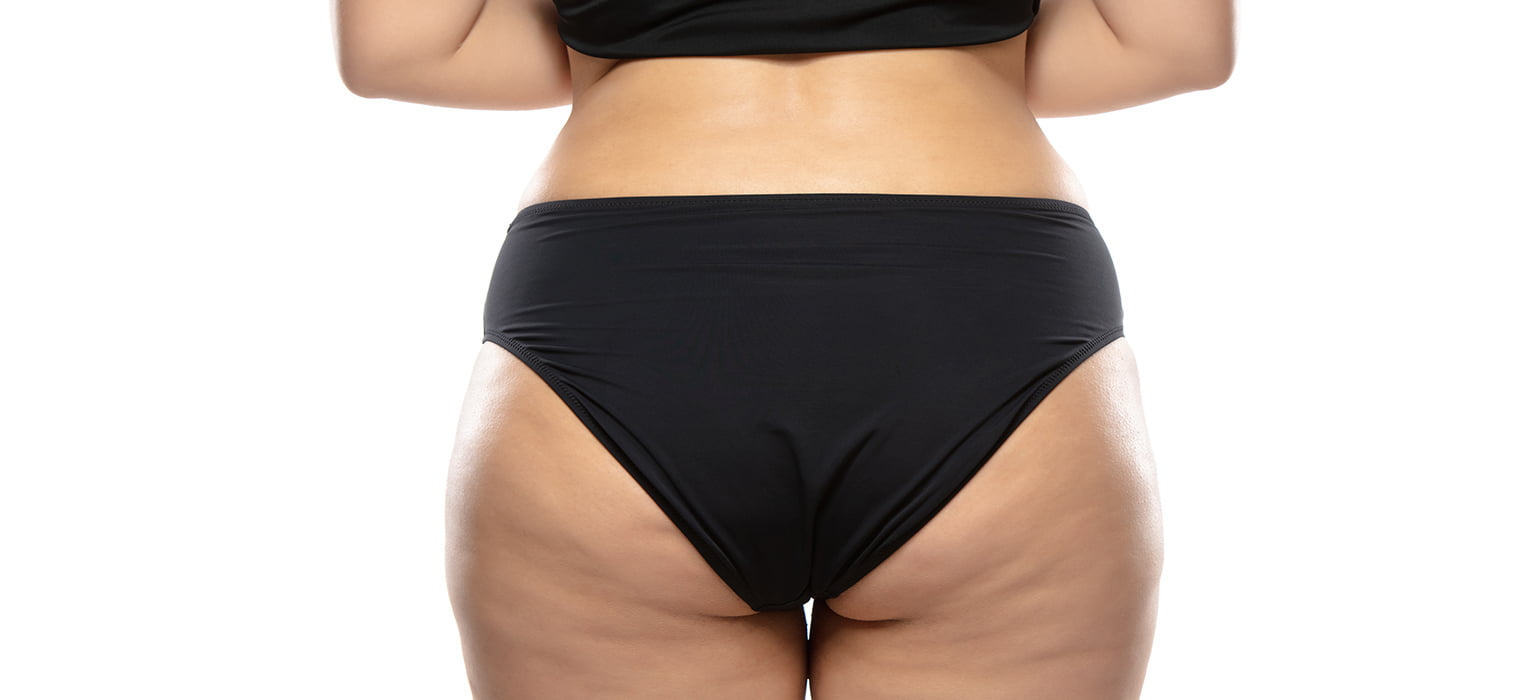
Procedure
Calf implant surgery generally takes 2 hours and is performed under general anesthesia. The implants are placed through a small incision just beneath the crease in the back of the knee. Unlike most other implants, calf implants are placed on top of the muscle, but beneath a protective covering (fascia) around the muscle so they are secure and mimic the movement of these highly active muscles.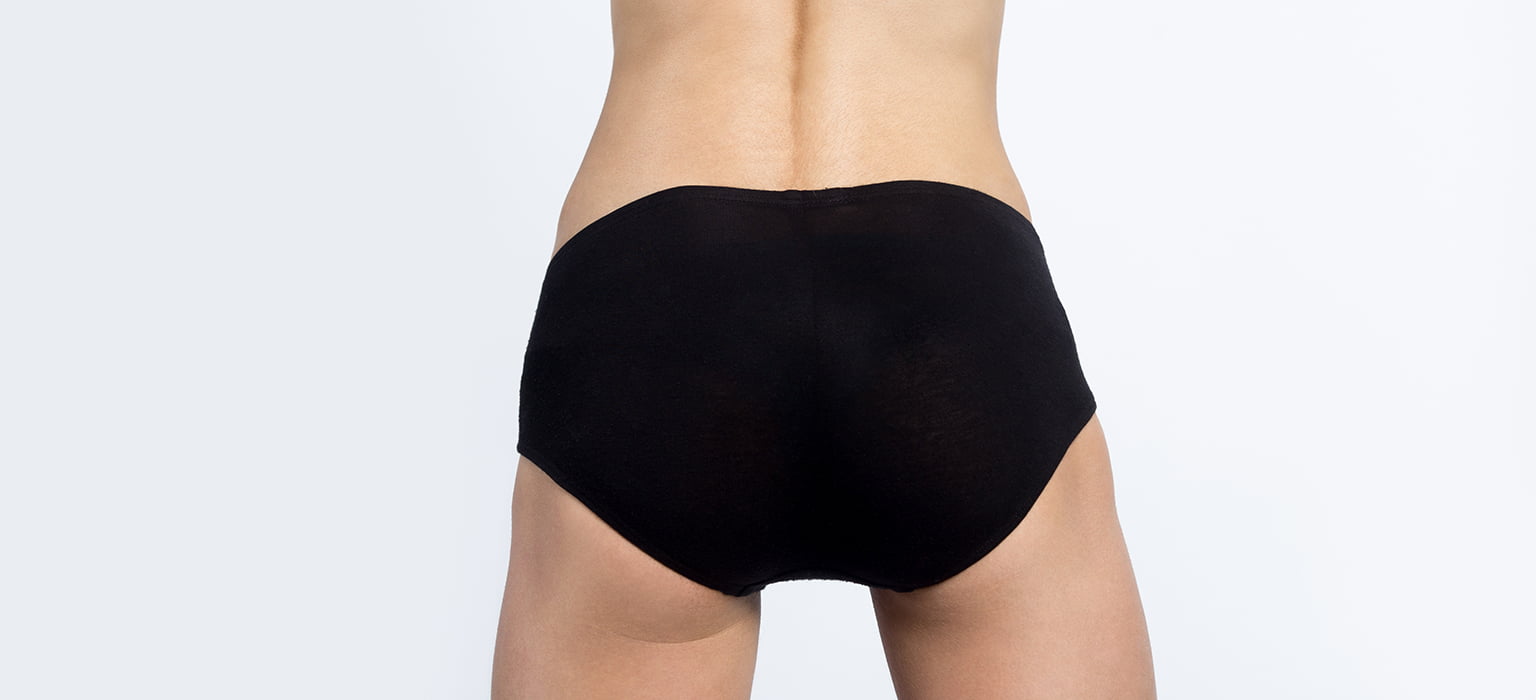
Recovery
Following surgery, you will be required to wear compression garments, limit repetitive lower body movements and keep your legs elevated whenever possible for several weeks. In addition, altering your normal gait and walking flat-footed during recovery is encouraged. monitoring your progress you should be back to light running, weightlifting, and other repetitive exercises somewhere between 6 to 8 weeks.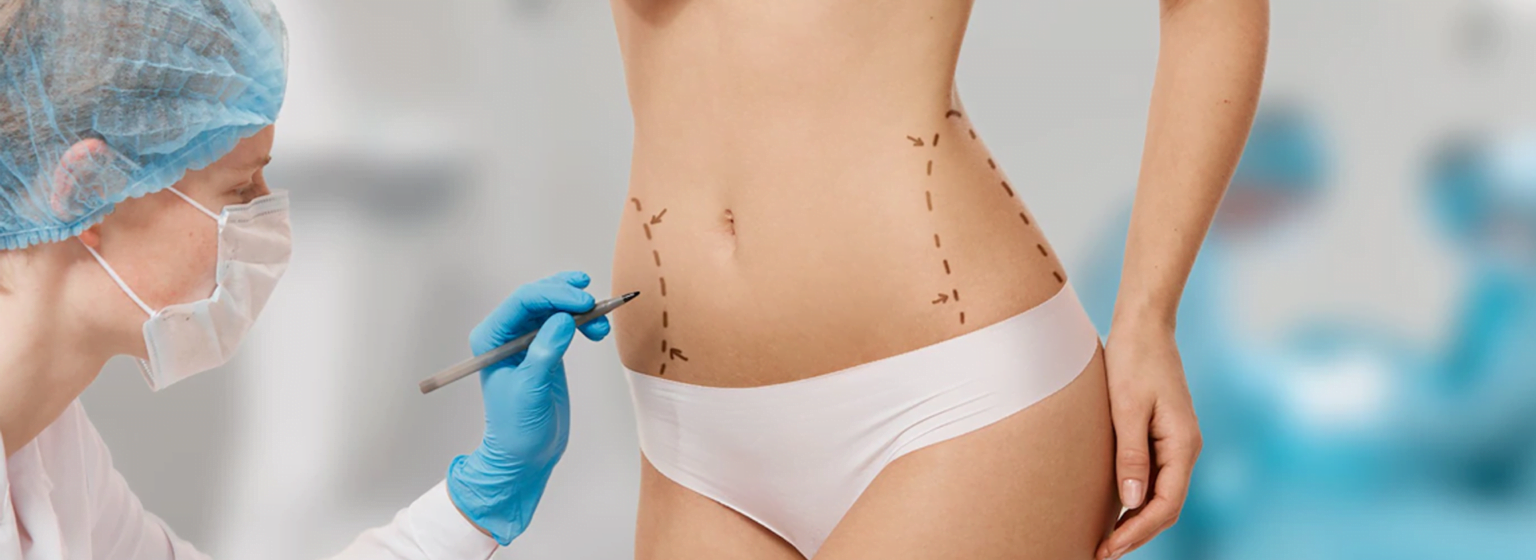
GLUTEAL (BUTTOCK) AUGMENTATION
A full, muscular look to the buttock conveys strength, youthfulness and peak physical fitness. Unfortunately, a good number of men have buttocks that are under-developed, poorly shaped or out of proportion with the rest of their body. Think your profile in jeans or slacks could look better? Gluteal augmentation creates a more contoured physique for a big boost in self-confidence. No goal is out of reach. The only decision is how to get there.Procedure
The outpatient surgery takes roughly 3 hours and is performed under general anesthesia. You’ll initially wear a compression garment under your clothing and will have limitations on putting pressure on the area for several weeks. All time frames for resuming different activities are tailored to your specific case with the ultimate goal of a more balanced profile and a more athletic and youthful appearance.Recovery
After the procedure, you will need to wear a support garment for approximately 2-3 months. This will help the skin red rape properly and provide support to the augmented buttocks or hips. Final results are noticeable three months after surgery. At this point, most of the swelling will be gone and the implants will be settled in their normal position.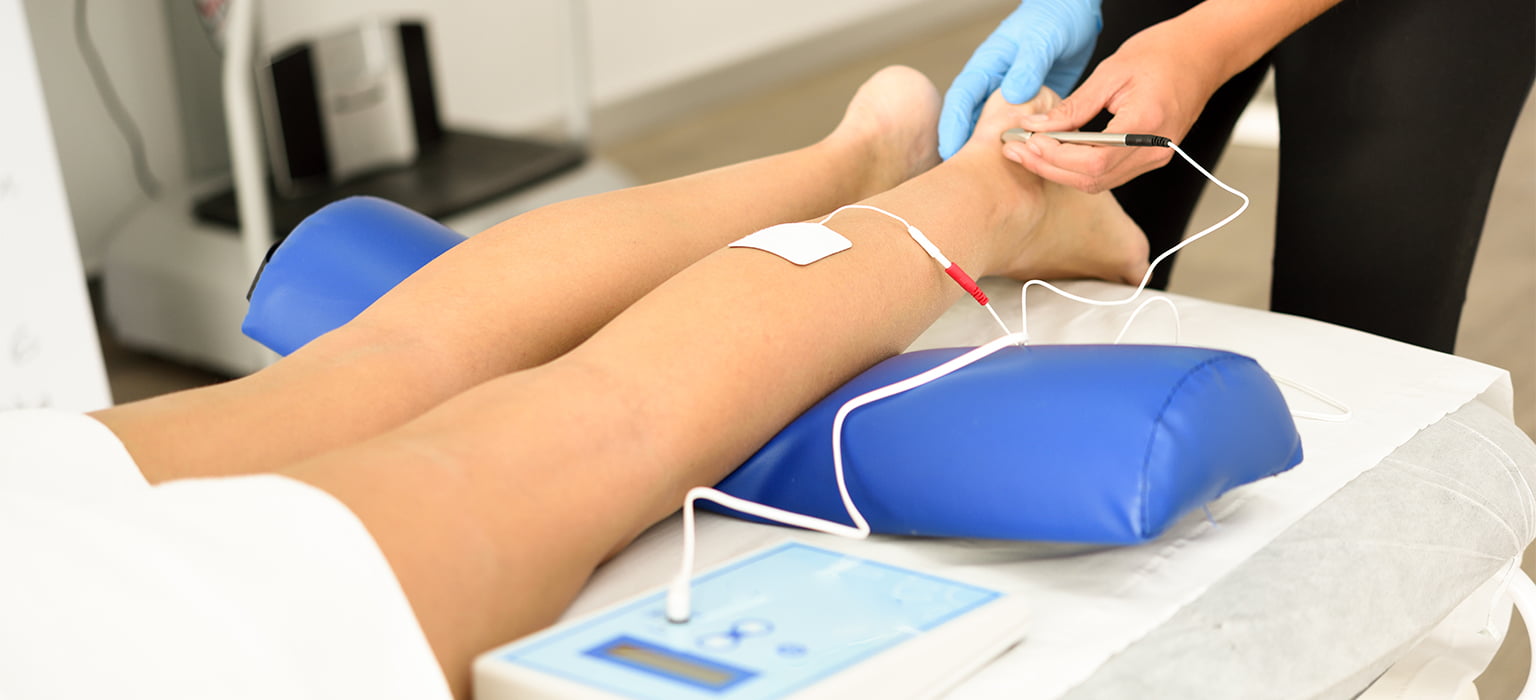
Procedure
Sclerotherapy is a safe, proven medical procedure that treats both the symptoms and the cause of varicose veins and spider veins. For sclerotherapy treatments, a series of micro-injections of a solution (“sclerosant”) are administered directly into varicose veins or spider veins. The injected solution acts to close off the vein with abnormal valves, sealing it off from your other, healthy veins. Over time, the treated veins shrink and are eventually absorbed by your body. Your blood flow, meanwhile, naturally reroutes itself into your healthy veins, improving your circulation and eliminating the root cause of your vein disease.
Recovery
Treatment sessions usually take less than half an hour, with no hospitalization required. Most patients do not find sclerotherapy treatments to be particularly painful, and recovery time is generally very short—most people are back to their regular routine the same day.Procedure learning Center
Morbid obesity is a chronic disease and can interfere with even the most basic physical functions, such as breathing or walking. Someone is considered morbidly obese if he or she is 100 pounds over their ideal body weight and has a BMI (body mass index) of 40 or more. Successful bariatric surgery patients have reduced hunger and appetite. Physical activities become easier and more enjoyable. The hormonal changes that helped leads to obesity are reversed, and weight maintenance becomes more manageable.
Procedure
Surgical treatment of obesity is also known as bariatric surgery or weight loss surgery. Surgery is currently the most effective treatment for morbid obesity resulting in durable and sustainable weight loss and accompanying health improvements. Bariatric surgery procedures are performed to treat comorbid conditions associated with morbid obesity, also referred to as “clinically severe obesity.” Two types of surgical procedures are employed. Malabsorption procedures divert food from the stomach to a lower part of the digestive tract where the normal mixing of digestive fluids and absorptions of nutrients occur. Restrictive procedures restrict the size of the stomach and decrease intake. Some surgical techniques combine both types of procedures. Extreme (morbid) obesity is a condition of persistent and uncontrollable weight gain that is a potential threat to life. It is characterized by a body mass index (BMI) equal to or greater than 35kg/m² (or a BMI of 35 or higher).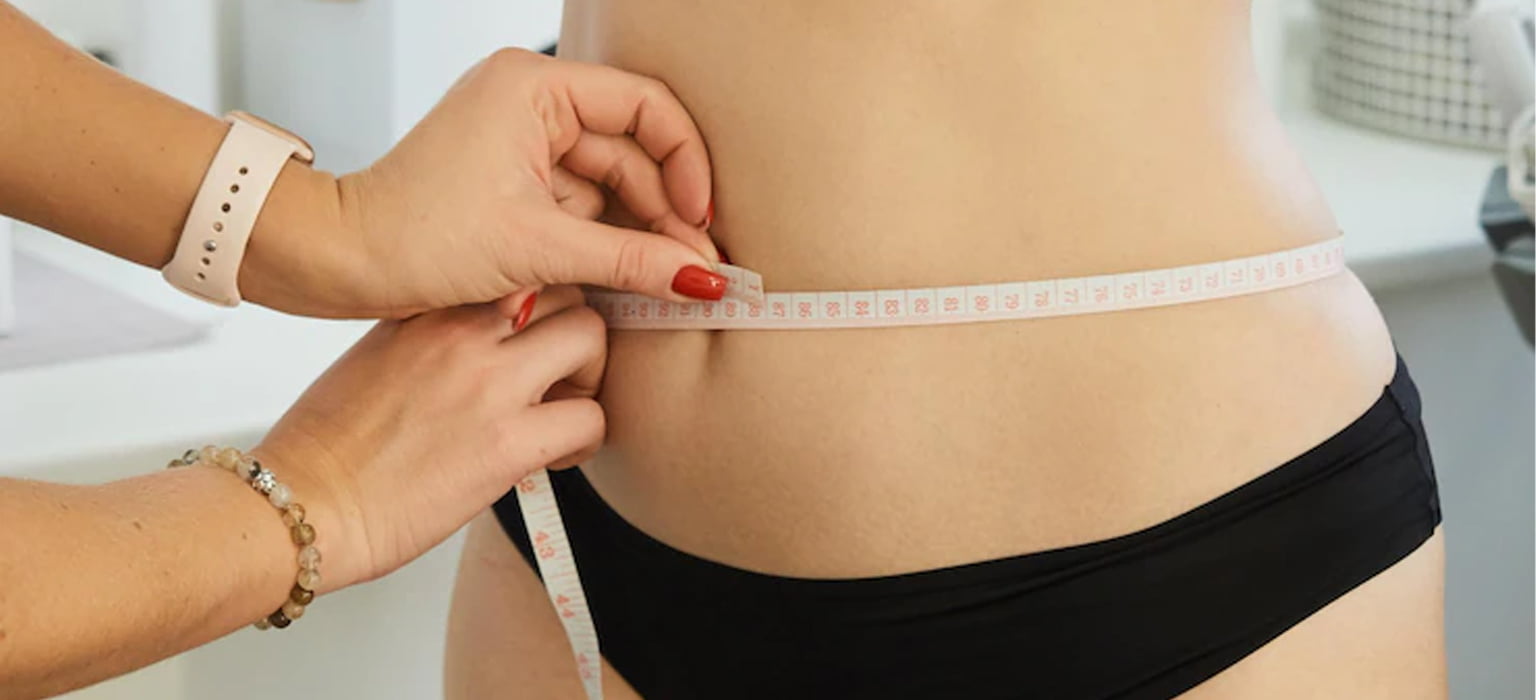
Recovery
Post-Operative diet is divided in to the following phases:- 1st week – Clear liquid diet
- 2nd week – Full liquid diet
- 3rd week – Pureed diet
- 4th week – Soft foods, regular diet After 3-months, one can progress to eating regular foods & proteins become a major part of the diet after surgery. Taking three small meals and three healthy snacks a day. Meals will focus on lean sources of protein, fruits, vegetables and whole grains, along with vitamin and mineral supplements for life, to compensate for the nutrients that are no longer able to absorb through the bypassed parts of the stomach and intestine.
2. BREAST SURGERY
Cosmetic plastic surgery in Lucknow offers a range of options for breast augmentation, one of the most talked about procedures among both cosmetic patients and plastic surgeons. This procedure increases the volume of the breast, which can be done with the help of implants or fat injections. Breast enhancement can increase your natural size and correct sagging and volume loss associated with age, weight loss, pregnancy, or breastfeeding.
At Lucknow Plastic Surgery Clinic, we offer breast augmentation via breast fat transfer, where excess fat is removed from one area (such as the belly or thighs) via liposuction and then injected into the breasts. In some cases, implants may be paired with fat transfer to help the implant sit more naturally. Whatever your goals and preferences, our team of experienced Plastic Surgeons in Lucknow can help you achieve the results you desire.
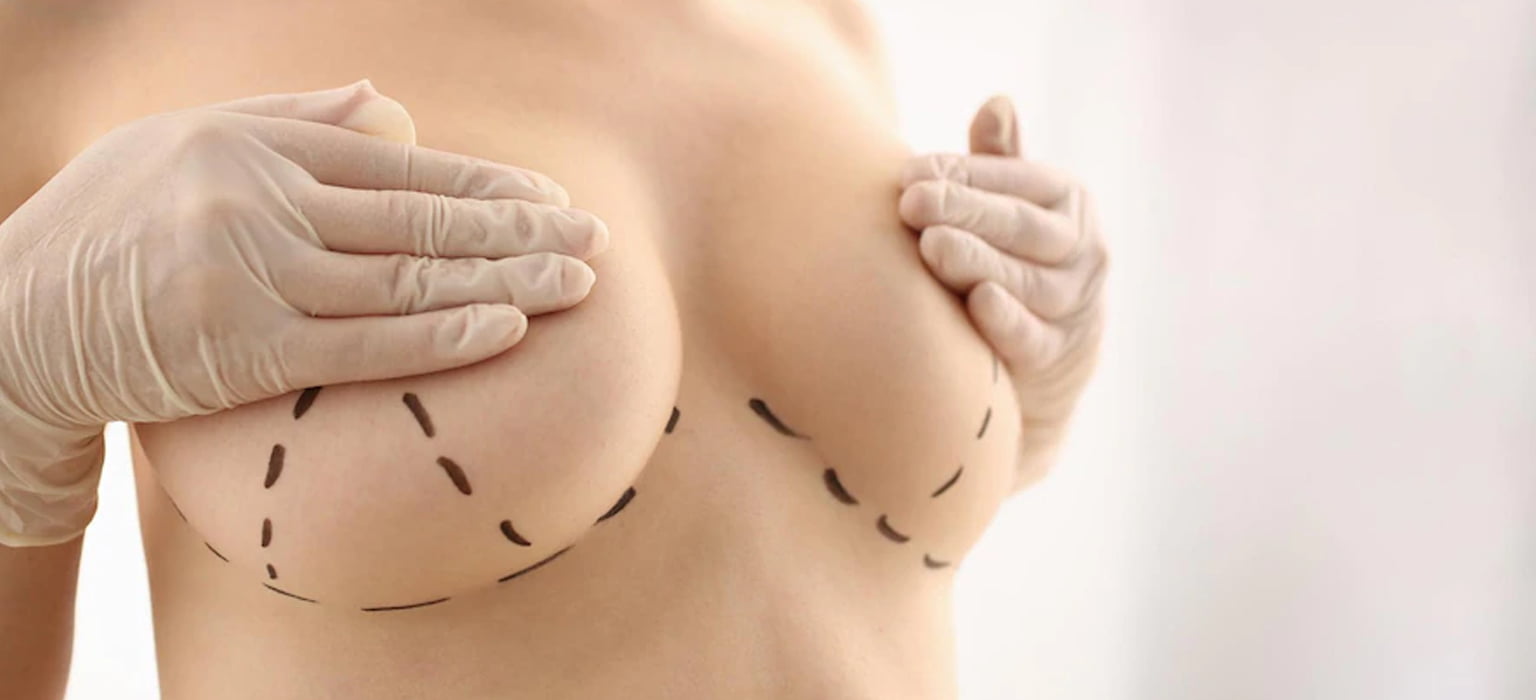
Procedure
Surgery time depends on the type of procedure (implant vs fat). It also depends upon the amount of augmentation needed. Typically the procedure lasts 2-3 hours. The procedure is done under general anesthesia.
This procedure is typically performed with breast implants. They’re available in a range of diameters, volumes, and projections (how far it projects from the chest wall), and your surgeon can suggest a size that’s most appropriate for your body and goals. These flexible devices filled with silicone gel or saline (saltwater) are inserted via an incision around the nipples (per areolar), under the breasts (in the inframammary fold), or in the armpit (Trans axillary) and then placed under or over the pectoral muscle.
Augmentation can also be done via breast fat transfer. Excess fat is removed from one area (like the belly or thighs) via liposuction and then injected into the breasts. In some cases, implants are paired with fat transfer because the fat can help the implant sit more naturally.

Recovery
Pain can last for up to five days, with some soreness, swelling, bruising, and tightness lingering for a few weeks. Most patients are allowed to return to work within one week of surgery. Discomfort after surgery is treated with oral analgesic. While complications are rare, you can minimize potential problems by carefully following the after-care directions given at the time of discharge.

Procedure
Before a breast reduction procedure, your doctor will perform a routine breast exam to determine if you’re a candidate for the surgery. You may also need a mammogram or other lab tests to ensure you’re in good health. You and your doctor will need to decide whether or not to use general anesthesia during the surgery, as some patients do fine with local anesthesia. Before a breast reduction procedure, your doctor will perform a routine breast exam to determine if you’re a candidate for the surgery. You may also need a mammogram or other lab tests to ensure you’re in good health. You and your doctor will need to decide whether or not to use general anesthesia during the surgery, as some patients do fine with local anesthesia. On the day of your surgery, you’ll probably have to avoid food and water in the hours leading up to the procedure. Your doctor will provide specific instructions. After administering anesthesia, the surgeon will make an incision starting at your areola (the pigmented area around the nipple) and continuing down to the underside of your breast. They’ll remove fatty tissue and skin to reduce the size of each breast. The surgeon is often able to leave the nipple in place, but, in some cases, they may need to reposition it.
Recovery
While you may return home from the hospital on the same day as the surgery, you’ll need plenty of time for rest and recuperation. Be careful to avoid any movement that would cause muscle strain for several weeks after surgery. Don’t lift heavy groceries or anything over 5 kgs. Your breasts will be sore and probably painful to the touch. With pain medication, you should be able to manage the healing process better. You may also have symptoms like numbness, itching, or general tiredness. Based on how quickly you recover, your doctor should be able to tell you when you can return to normal activities like work, exercise, or driving.
General Procedure
A breast lift addresses sagging and uneven breasts, decreased breast volume and drooping nipples and stretched areolas, recreating a youthful shape and lift to your breasts. If there is too little or too much breast volume, a breast augmentation or breast reduction might be recommended in addition to a lift. Every year, thousands of women undergo successful breast-lift surgery, experience no major problems and are pleased with the results.
Procedure
A mastopexy is performed under general anesthesia or intravenous sedation in a hospital, free standing surgical center or surgeon’s office equipped with a surgical suite. Different techniques for removing breast skin and reshaping the breast determine the location of the incisions and resulting scars. Your surgeon will select a technique based on your breast size and shape, areola size and position, degree of breast sagging, skin quality and elasticity and how much extra skin you have.
Recovery
While you may return home from the hospital on the same day as the surgery, you’ll need plenty of time for rest and recuperation. Be careful to avoid any movement that would cause muscle strain for several weeks after surgery. Don’t lift heavy groceries or anything over 5 kgs. Your breasts will be sore and probably painful to the touch. With pain medication, you should be able to manage the healing process better. You may also have symptoms like numbness, itching, or general tiredness. Based on how quickly you recover, your doctor should be able to tell you when you can return to normal activities like work, exercise, or driving.
Procedure
The surgery takes about an hour when it’s performed alone. First, you’ll be given local anesthesia, possibly with IV sedation, to ensure that you’ll stay deeply relaxed throughout your procedure. Your surgeon will make an incision along the perimeter of both your current and new areolae, carefully removing the donut-shaped piece of excess tissue. They’ll secure your smaller areola with a permanent suture inside your breast tissue and close the incisions with sutures, which may be dissolvable. Then they’ll bandage the area, and you may be placed in a surgical bra.
Recovery
If the procedure was done under local anesthesia, you’ll be able to go home very soon after. If you received general anesthesia because your procedure was combined with other breast surgery, you’ll be monitored for a few hours in a recovery room before being released to a friend or family member who can take you home. Your surgeon will give you instructions on how to gently clean your incisions to reduce the risk of infection. They may also ask you to wear your surgical bra or sports bra for the first few weeks, too, to protect your areolae and position your nipples for optimal healing, in addition to protecting the area. During the first week of your healing process, you’ll need to sleep on your back or a wedge backrest so you don’t injure or put too much strain on your chest. After a week, your provider will remove any non-dissolvable sutures at a follow-up appointment, where they’ll also check on how your healing process is going. Avoid exercise or other strenuous activity, for at least two and ideally three weeks. At that point, you should be able to resume your normal activities.
Procedure
Scars resulting from gynecomastia surgery vary, depending on the amount of breast tissue you have and the elasticity of your skin. Even those who have larger breasts and tend to get larger scars are usually quite satisfied with the results. The procedure involves day surgery with a general anesthetic. You will be able to go home a couple of hours after the anesthetic wears off but should have someone drive you home. Parts of this procedure may be covered by your health insurance; however, for many patients, this is considered a private or cosmetic procedure. In cases where liposuction alone can provide the desired results, the liposuction cannulas can be inserted through tiny incisions along the edge of the areola (the pigmented skin surrounding the nipple) or discretely on the lateral chest. When surgical excision is necessary, our plastic surgeons create a slightly longer incision around the edge of the areola. The incisions are placed such that the resulting scars blend in with the natural transition from areola to chest skin; the scarring is usually quite inconspicuous.
Recovery
If you have a very physical job, we recommend taking 4 weeks off. If your job is fairly sedentary or you are a student, you may return to it as early as one week after surgery. You need to avoid activities that may increase your blood pressure, such as running or working out, until at least 4-6 weeks after surgery.
Procedure
Before surgery, you’ll change into a hospital gown and be given anesthesia. If local anesthesia is used, you may be given a sedative to relax during the breast lump removal. If you’re given general anesthesia, you’ll be in a painless sleep during the entire procedure. Many doctors recommend removing fibro adenomas, especially if they keep growing or change the shape of the breast. Traditionally these lumps are treated by general surgeons who remove the lumps through direct incisions on the breast lump. These leave behind undesirable ugly scars. Surgeon remove Fibro adenoma by a small per areolar incision this, leaves almost no visible scarring on your breast. Multiple lumps can be removed through this single incision.
Recovery
After the procedure, you’ll go to the recovery room. Your vital signs will be monitored while you wake up from the anesthesia. When you wake up, you can expect some pain in the incision area. You’ll be given medication for the pain. In the weeks following surgery, you’ll need to restrict your activities. It takes time to heal. It’s important to follow your doctor’s instructions for care after surgery. You will need to take care of the incision at home. The stitches may dissolve on their own or your doctor will remove them during a follow-up appointment. If radiation therapy is necessary, it typically starts within a few weeks of a lumpectomy procedure.3. FACE
If you’re interested in improving the signs of facial and neck aging, a facelift (rhytidectomy) may be right for you. At Lucknow Plastic Surgery Clinic, we offer the best cosmetic plastic surgery, and our team of skilled Cosmetic & Plastic Surgeons in Lucknow is highly experienced in facelift procedures. With age, your skin can lose some of its underlying supportive structure and elasticity, leading to wrinkles, drooping skin along the jawline, and deepening furrows around the mouth and chin.
A facelift is considered the gold standard of all anti-aging procedures, and it can address a wide range of concerns in one surgery, including midface sagging, jowls, neck folds, double chin, marionette lines folds, and wrinkles on the face. Cosmetic Plastic Surgery in Lucknow uses advanced techniques to tighten the muscles and redrape the skin for a more youthful and rejuvenated appearance. If you’d like to learn more about facelift procedures in Lucknow, we invite you to schedule a consultation with our team.

Procedure
The procedure takes one to four hours, and most patients have dramatic results after only one session. This is why so many doctors and patients prefer it to nonsurgical fat reduction treatments like SculpSure, CoolSculpting, or Vanquish, which usually require at least two sessions and take months to see results.Most facelift techniques focus on the lower facial areas, such as the jawline, jowls and cheeks. A facelift can also focus on the midface or the forehead. In some techniques, deeper facial tissues may be repositioned or tightened to restore a more youthful contour. In other techniques, removal or addition of fat or other soft-tissue fillers may be necessary to achieve the best results. Today, many different techniques exist with outcomes that can be consistently reliable, safe, and durable. Your incisions will depend on the area of the face that is targeted and the amount of change you want.

Recovery
Expect to have some discomfort for a couple of weeks, especially for the first 48 hours following Surgery. This can be controlled with the pain pills prescribed by your surgeon. You may be able to resume light work or school within two weeks, although most people take 3-4 weeks off, with a facelift procedure. Returning to work should be discussed with your surgeon before your surgery. You will be able to shower and wash your hair within 24-48 hours.
It will take 6-12 months for you to see the final benefit of your facial surgery.

Procedure
The surgery involves lifting the skin and the deep layers of the forehead using incisions along or within the hairline. The surgery may also involve lifting or repositioning the muscles to correct how they pull on the eyebrows and contribute to deep wrinkle lines. Brow-lift procedures have evolved from open techniques to more complex short incision and endoscopic techniques. A brow lift usually involves incisions in the hair-bearing scalp, but sometimes incisions are made in the forehead and/or the upper eyelids.
Recovery
While most patients don’t have a significant amount of pain following a brow lift, you may require pain medications for the first few days following the surgery. Most patients are able to resume light work or school within 1-2 weeks. Heavy lifting should be avoided for the first 2-4 weeks following surgery, so parents of young children may want extra help during this time. Most bruising and swelling subsides within 3 weeks. It will take 6-12 months for any subtle residual swelling to resolve so you can see the final benefit of your surgery.
Procedure
The procedure can be done in local or general anesthesia depending upon the patient profile. It is a day care procedure most of the times where patient can go home the same day. Some swelling after the procedure is expected. For surgery on your upper eyelids, you will receive local anesthesia, to numb the area. Markings will be made prior to surgery with you sitting up, to determine the exact amount of skin to be removed. Once you’re numb and comfortably sedated, your surgeon will make an incision along the natural crease in your eyelid and remove extra skin. Occasionally, a small amount of muscle and fat can be removed as well. Lower eyelid surgery can be a bit more uncomfortable for a patient, so Dr. Kapadia performs it under intravenous sedation or general anesthesia. With this procedure, the incision is made just below or behind the lower lash line or on the back of the eyelid.
Recovery
There can be mild discomfort during the recovery period. If the pain is severe or you develop a blurry vision, consult your surgeon immediately. Sutures are removed after 5 days from the surgery. It is common to experience swelling to the eyelids and a feeling of numbness in the first few days. Most patients require painkillers for a couple of days to relieve any discomfort. Some patients have their swelling resolve in just one week whereas others have mild swelling that persists for several weeks. Bruising normally disappears in 2-3 weeks and you may use makeup within the first week to hide discoloration.
Procedure
Cheek implant can be done as a single treatment or in combination with other cosmetic surgery procedures such as eyelid surgery, rhinoplasty or facelift. Sometimes, it is done in conjunction with a jaw implant or chin implant to fill the facial profile. The first step is the selection of implant of right shape and size fitting your cheek anatomy. The Implant may be made up of silicone or other biocompatible material. Surgery is done in two ways. The surgeon may make a small (About 1cm) incision in the back of your mouth where gums and cheek meet, or the incision is made beneath the lower eyelash. A pocket is formed for the implant and surgeon secures implant within the pocket affixing it to the soft tissue or bone. The positioning of the implant depends on its type. Finally, the incision is closed with sutures
Recovery
During the first few days after an injection, you should avoid sleeping on your cheeks. Try to sleep facing up, flat on your back. You may also want to avoid strenuous exercise until the filler has completely taken its shape, 48 hours after the injection procedure. Avoid touching your face, and keep your face clean and dry as much as possible until the risk of infection has passed.
Procedure
Cheek implant can be done as a single treatment or in combination with other cosmetic surgery procedures such as eyelid surgery, rhinoplasty or facelift. Sometimes, it is done in conjunction with a jaw implant or chin implant to fill the facial profile. The first step is the selection of implant of right shape and size fitting your cheek anatomy. The Implant may be made up of silicone or other biocompatible material. Surgery is done in two ways. The surgeon may make a small (About 1cm) incision in the back of your mouth where gums and cheek meet, or the incision is made beneath the lower eyelash. A pocket is formed for the implant and surgeon secures implant within the pocket affixing it to the soft tissue or bone. The positioning of the implant depends on its type. Finally, the incision is closed with sutures
Recovery
During the first few days after an injection, you should avoid sleeping on your cheeks. Try to sleep facing up, flat on your back. You may also want to avoid strenuous exercise until the filler has completely taken its shape, 48 hours after the injection procedure. Avoid touching your face, and keep your face clean and dry as much as possible until the risk of infection has passed.
Procedure
With both the open and closed approaches, the details of the technique used can vary considerably depending on the patient and the goals of the surgery. Rhinoplasty is always done under general anesthetic and usually the patient goes home the same day. For people with very subtle contour irregularities, non-surgical techniques can sometime be used to correct these. Injectable fillers or fat grafts can be used to fill in minor depressions. The results are subtle and may not last, depending on the filler used.
Recovery
While severe pain is unusual, your face may feel puffy, your nose may ache, and you may have a dull headache post-surgery. Extensive swelling, bruising, and skin discoloration to the nasal area and the eyes is very common and usually will subside within 3 weeks. Less obvious swelling to the nose and tip of the nose will subside slowly and may be seen for months following your operation. Any external scars will take 6-12 months to soften and fade. The final results may not be apparent for a year or more. Depending on your job duties, you will need to have 1-3 weeks off of work or school after your surgery. Light activity can be resumed the next day but heavy lifting should be avoided for a few weeks, so parents of young children may want extra help during this time.
Procedure
Chin augmentation surgery is typically done as an outpatient procedure, but some surgeons perform it in a hospital. It usually requires local anesthesia with IV sedation, though you may opt for general anesthesia if your situation and procedure are especially complex. The surgery takes anywhere from 30 minutes to an hour. First, your surgeon makes a small incision under the chin or inside the mouth where the gum and lower lip meet, so that the scar won’t be too noticeable. They stretch the skin to create a pocket. As your surgeon inserts the implant, they’ll mold it around your chin bone. Once the implant is secured, your surgeon sutures the incision and bandages the chin with a dressing that remains in place for two to three days.
Procedure
Both dermabrasion and dermaplaning can be performed on small areas of skin or on the entire face. They can be used alone or in conjunction with other procedures such as facelift, scar removal/revision or chemical peel. Since dermabrasion is a surgical procedure, local anesthesia is required and is occasionally supplemented by intravenous sedation. When the skin is appropriately numb, an abrasive device is applied to the skin. This device could be a rapidly rotating wire brush or a diamond encrusted wheel or even abrasive screening. The choice depends on the anatomical location as well as the particular area to be treated. A refrigerant spray is often used to reduce the movement of the skin during the procedure. The ability to perform this procedure is very dependent on the skill and experience of the operator.
Recovery
The wound produced by dermabrasion, like any other wound, must be kept clean and moist. Gentle removal of crust and debris can occur after removal of the postoperative dressing (usually 24-48 hours after the procedure). Petroleum jelly is generally applied to the wound surface frequently. Healing usually occurs within 10 days and redness dwindles after three to six weeks. procedures such as facelift, scar removal/revision or chemical peel. Since dermabrasion is a surgical procedure, local anesthesia is required and is occasionally supplemented by intravenous sedation. When the skin is appropriately numb, an abrasive device is applied to the skin. This device could be a rapidly rotating wire brush or a diamond encrusted wheel or even abrasive screening. The choice depends on the anatomical location as well as the particular area to be treated. A refrigerant spray is often used to reduce the movement of the skin during the procedure. The ability to perform this procedure is very dependent on the skill and experience of the operator.
Procedure
Ear surgery is an outpatient procedure, meaning there’s no hospital stay required and you can go home about two hours after surgery. It’s often done under general anesthesia for kids and local anesthesia in adults, but it will depend on the complexity of the procedure. Surgical techniques vary based on your goals, but generally, otoplasty involves two primary aspects: reshaping the ear and moving the entire ear closer to the head.
